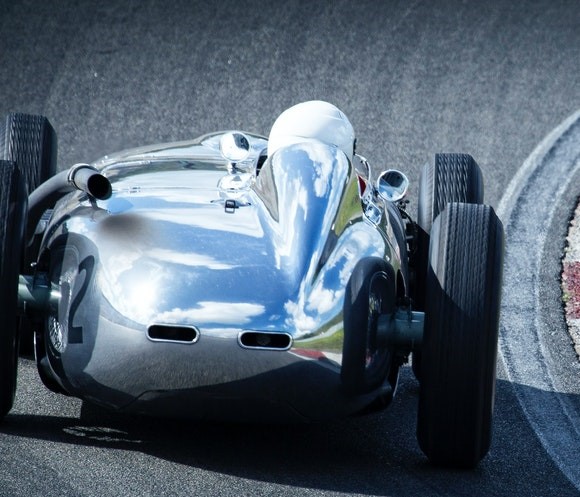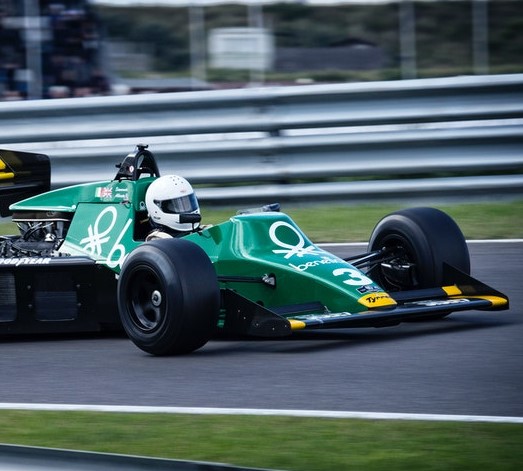6 Incredible Innovations in Race Car Tech
The automotive industry is constantly looking to improve the driving experience. Racing is where these innovations are born — experimenting with new technologies is expected in the racing industry.
Drivers want to reach faster speeds and cut down on resistance to win. So whether it’s NASCAR or Formula 1, racing has always been at the forefront of developing and implementing advanced tech into their cars.
NASCAR focuses its efforts on entertaining its loyal fans, while F1 is the leader in revolutionizing the racing industry. There’s a perceived rivalry between the two, but both organizations work to elevate their technology to improve overall racing performance.
Whether you’re a racing fan or not, it’s interesting to learn more about racecar tech. Some of the advancements are incorporated into the standard vehicles we use on the road every day.
Let’s dive into some of the recent advancements in racing technology.

1. Carbon Fiber
What makes carbon fiber attractive in automotive racing is its strength and durability. Compared to other materials used for cars, carbon fiber can withstand high-energy forces during a high-speed race.
How a vehicle performs can mean the difference between a winning and a losing race. In addition, carbon fiber allows cars to go the extra mile. Parts that are made from carbon fiber tend to last longer, which is an attractive feature for racers.
2. Telematics
The concept of telematics was introduced back in the 1960s when the military saw the potential to combine telecommunications and information technology. Using the Internet of Things (IoT) and advanced software, telematics in motor racing is expected to grow in the next few years.
Drivers can effectively communicate with their crews in the case of an emergency. For example, the Indy 500 cars have sensors that collect large amounts of data, which can then be used by drivers and sports scientists offsite.
3. Paddle Shifters
Racecar paddle shifters put control back in the driver’s hands, allowing them to accelerate in seconds and manipulate the torque of their vehicle. While some automatic cars on the road have paddles, it’s uncommon for the average driver to use them while, say, driving to the grocery store.
Paddles were introduced in 1980 to make shifting gears easier for racecar drivers. However, they became more mainstream, with most racecars incorporating paddles by the 1990s.

4. Hybrid Engines
It’s a shared goal amongst racers to achieve the most significant output from a lightweight yet durable engine and improve speed. The hybridization of engines in NASCAR will add to the already incredible aerodynamic capabilities of racecars.
However, the transition to electric, battery-assisted vehicles is no easy feat. NASCAR finds itself stuck between catering its races to loyal fans and generating new fans by incorporating future tech. It’ll be interesting to see how hybrid engines become more widespread in the racing industry.
6. Improved Safety Measures
Safety in racing remains a priority for drivers and their crews. There’s nothing scarier than seeing a car traveling at 200 miles per hour tumbling around a track, leaving the driver subject to severe injuries.
Here are some examples of new safety tech making its way into racing:
- Steel and Foam Energy Reduction (SAFER) barriers
- Head and Neck Restraint systems
- Improvements to the angle of the driver’s seat
Driver safety is paramount and should not be taken lightly. As new tech evolves and is incorporated into supercars, drivers and fans alike can rest assured that there will be a decrease in injuries, especially those that could be fatal.
In addition to these innovations, the rapid growth of artificial intelligence is changing the racing industry landscape as we know it. Fully autonomous vehicles created by Roborace have already hit the ground running. AI-based software will likely be incorporated into the cars we see on the track today.

The Future of Racing
There’s much to be excited about for new fans or die-hard fans when considering the new racecar tech being introduced to the industry. As more sports scientists, researchers, and engineers get their hands on new technologies — it won’t take long for them to improve a driver’s racing performance.
xoss article thanks for sharing us https://bdwebit.com/domain-registration